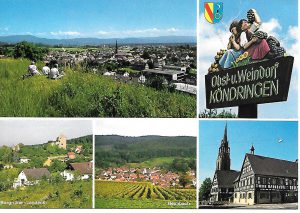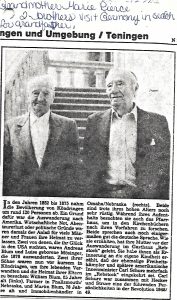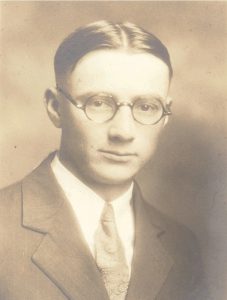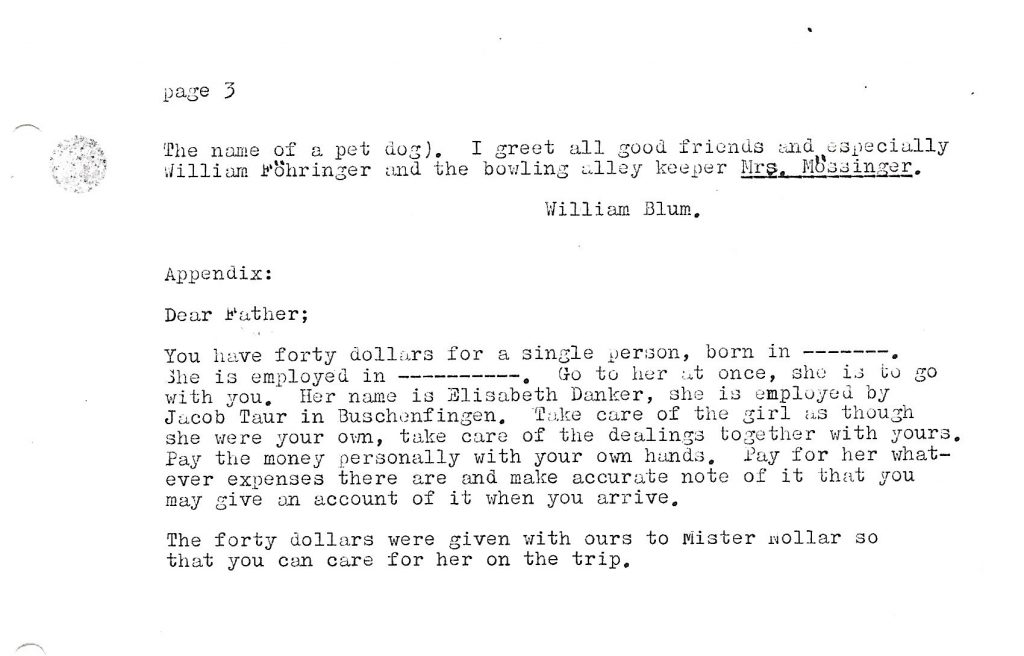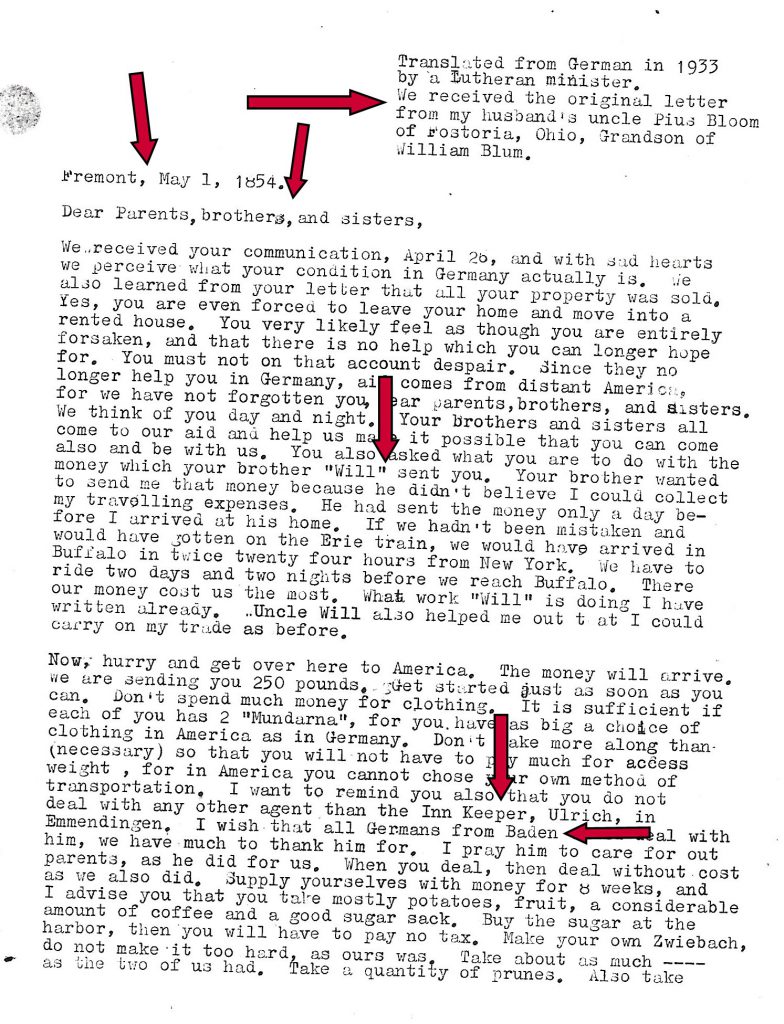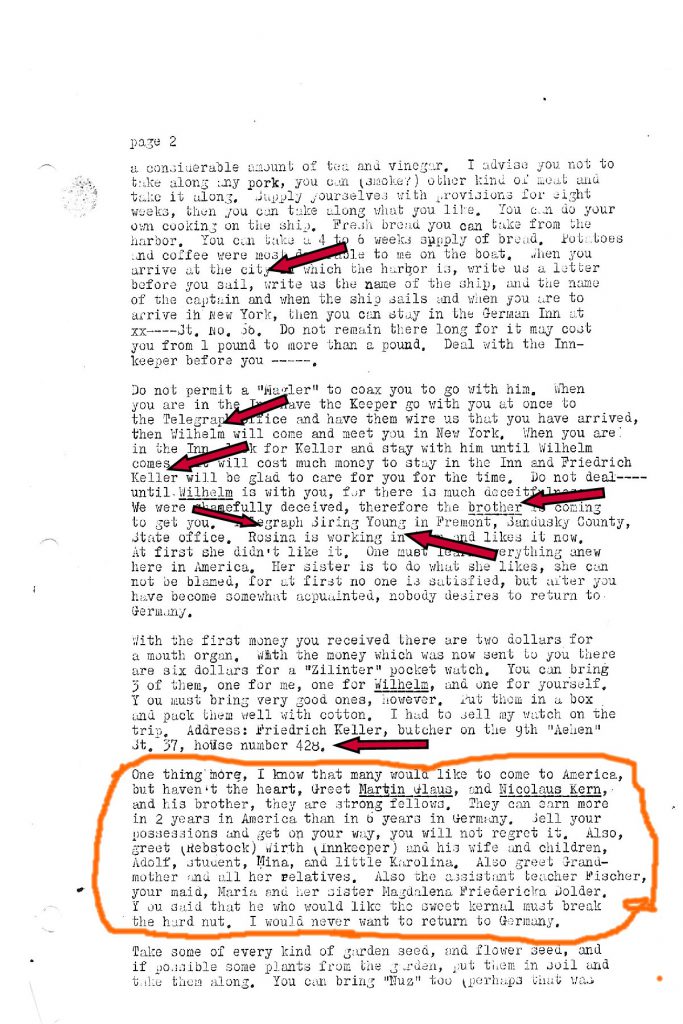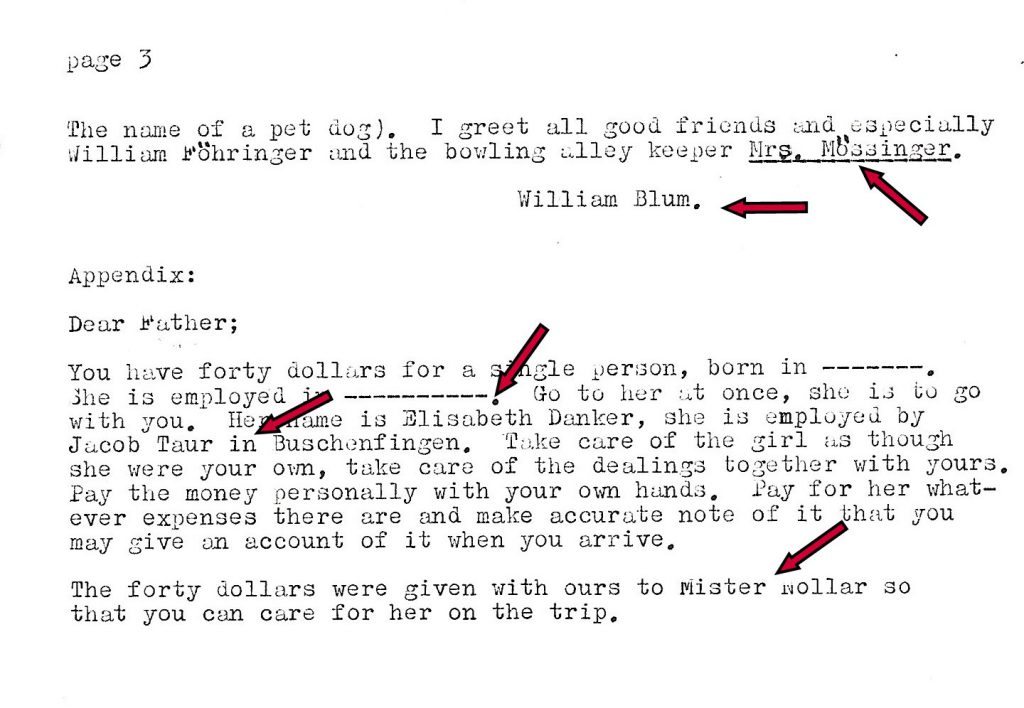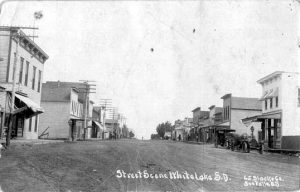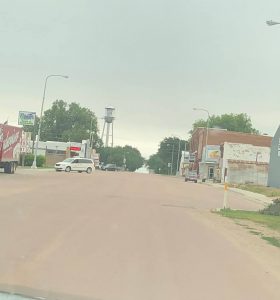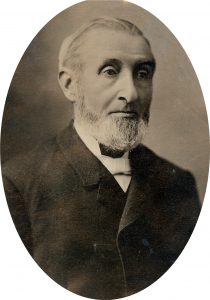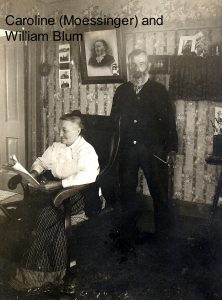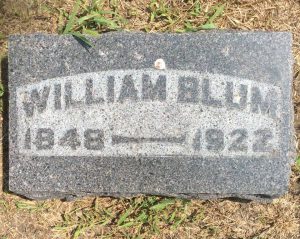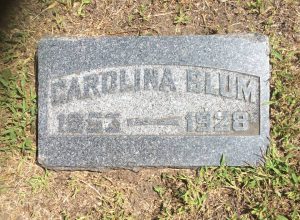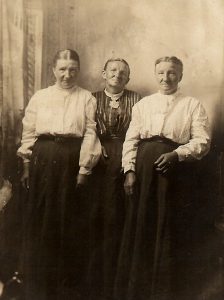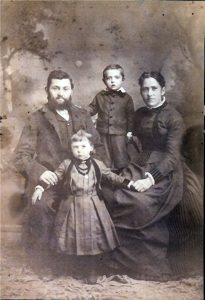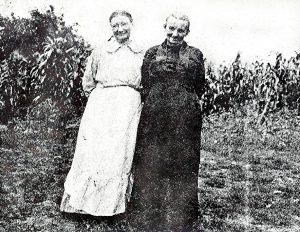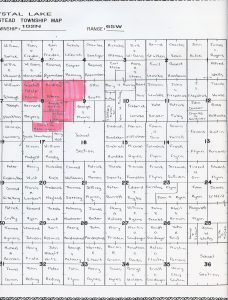 Louisville, Nebraska was founded by Captain J T A Hoover in 1857. Our Blum Family settled in and around the Louisville area so I think it only fitting that I give a little insight on the area. Lawrence Duerr shared his recollections of early Louisville and much of what I share here is from his memories. He was 80 years old when he wrote down his memories and shared them with family.
Louisville, Nebraska was founded by Captain J T A Hoover in 1857. Our Blum Family settled in and around the Louisville area so I think it only fitting that I give a little insight on the area. Lawrence Duerr shared his recollections of early Louisville and much of what I share here is from his memories. He was 80 years old when he wrote down his memories and shared them with family.
A Bit of the Family Tree
Lawrence Duerr was the grandson of Christian Duerr and Mary Ann Huber. His grandmother Mary Ann was the daughter of Jacob Huber , and the sister of George John Huber the husband of Great Aunt Minnie Moessinger, our great grandmother Louise’s sister. George and Mary Ann Huber were children of Jacob and Mary M Huber.
Christian Duerr was born May 7, 1841 in Wittenburg, Germany and came to America October 12, 1864. From there he went to Dayton, Ohio where his brother Gottleib lived. Mary Ann was born Feb 2, 1846 in Greenville, Ohio and she married Christian in 1866. They migrated to Nebraska in 1869 arriving at Plattsmouth April 9, 1869. They settled a mile south of where the town of Louisville is situated. It was in the vicinity of where our Blum family eventually settled. As a mater of fact, Aunt Minnie was the one that told Grandpa Andrew about the land he eventually bought and settled on. Next door lived Mary Ann’s uncle Captain J T A Hoover. Captain Hoover moved from Ohio to Nebraska around 1857 with an account of $325.
Jacob Huber and Captain Hoover were brothers, Jacob keeping the German spelling and Captain Hoover taking on the English spelling. Jacob and Captian Hoover owned the land where Louisville now sits. Captain Hoover played an instrumental role in bringing the B &O Railroad to the area and they gave the railroad 1/3 of the town lots to lay out a town and establish a station there. Captain Hoover built the first house in the city of Louisville, Nebraska.
Jacob Huber’s family consisted of two sons, George and Phillip, and four daughters, Mary Ann, Kate, Caroline, and Christina.
Christian and Mary Ann had four children, George born in Ohio, Philip, Lucy, and Anna, the latter three born in Louisville, Nebraska.
Philip married Anna Bell Leddy of South Bend. they had three children, John, Stella, and Charles.
Anna Duerr married John Leddy also of South Bend and they had one daughter, Della. They later divorced.
Lucy married Martin Zaar of South Bend and they had one adopted daughter, Florence. Florence was the first wife of our Great Uncle Martin Blum (grandmother Marie’s brother).
George Duerr married Rosanna Hartman of Chapman, Nebraska and they had two children, Lawrence and Ruth.
Lawrence Duerr first married Elsie Stulken of Selby, South Dakota. Elsie Frances Stulken (2nd cousin 1x removed) was born Feb 2, 1911 in Gleichen, Alberta, Canada to Henry and Anna Marie Huber (1st cousin 2x removed) . Anna Marie was the daughter of our Great Aunt Minnie Moesinger and husband George Huber. ( Are you confused yet? ) After Elsie’s death Lawrence married Elda Thieman (1st cousin 1x removed.) Elda was the daughter of Ida Blum (sister to Grandmother Marie) and Herman Thieman.
Lawrence and Elsie had three children (third cousins), Marie Anne, Marlene, and Gail.
MEMORIES of LAWRENCE DUERR
BIRTH 15 OCT 1910 • Louisville, Cass, Nebraska, United States
DEATH 16 JUL 1997 • Riverview Cemetery, Cass Co, Louisville, NE
written in 1991

“My early recollections of Louisville are pretty fair, but not guaranteed one hundred percent. On the East side of Main Street, the Drake Hotel, the Currier Newspaper print shop, Wm Keecklow’s Blacksmith Shop, next- a small building (probably a cream station). Ben Hoover’s Jewelry and Watch Repair. Another building housed a shoe repair shop, a restaurant, Wm. Dier’s General Store and Blake’s Drugstore. Across the street going North was Kraft’s Store, a Saloon, Pankonin’s Implement Store, Edgar Pankonin’s Repair Shop, another building that housed a sort of variety store, Frank Buckman’s Bakery and Bob McCarty’s home.
The West side of Main Street going South isn’t as clear. One building called the Ontario House, must have been a boarding house. It stood where the Laundromat stands today. There were 2 more building that I don’t know what was in them. The the old Joyland Theater, then a row of small frame building. Next a building that housed the Post Office after 1914, next was Ossenkop’s General Store and then the Bank of Commerce. Across the street North was a hardware store ran by a man named Dorsey. He also was Postmaster in 1913 and maybe 1914. Next was Stander and Stander Hardware and Furniture Store. Frank Nichol’s General Store, Frank Johnson’s Restaurant, Bob McCarty’s Saloon, Ed Twiss’ Meat Market, and the telephone office, and Metz Saloon. I have no recollection of the next 2 building, Dr. Worthman’s office was on the corner. Across the street south was the Star Livery Barn.
Stander and Stander sold gasoline. It first was kept in a barrel in the back yard. It was carried out and poured in your car from a can and funnel. Later they installed the first gas pump in town. A bowser ratchet pump that put out a gallon at a stroke. Gas pumped increased fast in town. At one time there were 8 pumps in town. There were 7 left in 1950, now I guess one can’t even get a tire repaired in town.
The folks would go to town about once a week to get the mail and some groceries, such as flour , sugar, coffee, etc. At those times a farm was almost self sufficient. They produced their own meat, canned vegetable, fruit, milk and butter.
Louisville at that time had 3 general merchandise stores that sold groceries and dry goods and clothing. There was a meat market also, that sold meat and meat products. In those times, many people in town kept a mild cow. Some boys had the chore of taking the cows to pasture every morning and bringing them in again at night. More affluent fold kept a driving horse and buggy. Sometimes father and mother would go to Omaha to shop. We would drive the horse and buggy to the livery barn where they would take care of the horse, and take us to the train depot. When the train came back in late afternoon, the livery rig would be there to pick us up. When we got up town, the horse was hitched up and ready to go- all for about a dollar and sometimes less. A livery right could also be rented by the hour or day.
Life was simpler in those times. Everyone wasn’t running madly hither and yon. Oh yes, there were busy times, like harvest time, when getting the harvest done, like getting wheat and other small grain in the shock and then threshing time were a a few hectic days; but people helped one another, if it took a day or so longer at one place, the crew finished it up- no one thought of overtime or extra pay!
The farm ladies of the neighborhood all tried to out do one another feeding the crew. The usual crew was 15 or 20 men. As soon as I was big enough to spit over my bib, it seems I had my little chores to do, such as feeding and watering chickens and bring in corn cobs and wood for Mom’s cook stove. Didn’t seem to hurt me. At that time we were to start to school at seven years, but we had whooping cough that summer and the school board decided I was to stay home as I might give it to the other kids. Father bought me some books. Although I was already able to read and write, on stormy days my father would come in the house and he and mom would talk and I listened. He got a slate and pencil and taught me arithmetic and writing so by the time I was five years old, I could read and write. The first year I went to school, I took 3 grades and I took the 5th and 6th grades in one year- so I didn’t spend a lot of time in school- 8 grades in 5 years. In those days a high school education wasn’t considered necessary to farm, but who in the hell said I wanted to farm! That’s all water over the dam now. I fooled them all- I think that I got myself a fair education.
I have lived in a time of great change. I remember when an automobile was considered to be a well, to do man’s toy. There were few roads fit to drive them on and the fabric tires of that time were not too good. A thousand miles was considered good. After WWI they started to improve the roads and the cord tire appeared. Also anti freeze was unknown before 1927. the first gravel was put on the roads in this area in 1924. I can remember the special election to vote on Bonds to gravel the road out each way from Louisville, to the precinct line. A hue and cry went up it wouldn’t work and wasn’t worth the price. The bond issue carried and it wasn’t so bad after all, and more roads were graded and graveled. By 1932 or 1933 most main roads were graveled. Before 1914 not everyone had a telephone. It took years to get lines extended. The first electric lights appeared in Louisville in 1915. Before that, kerosene lamps were the source of light, except for a few gasoline lighting systems and a few carbide gas plants- really they were acetylene gas lights. By 1920, gasoline engine powered generators were beginning to appear. The generators kept a bank of large batteries charged, usually 32 volts. They furnished electricity for lights and motors to run washers and pump water. We even had a 32 volt iron. We would charge batteries at least once a week. I acquired a plant about 1937 and used it until the High Line came about, thanks to R.E.A.
Radio came into general use in the 1920’s. Some of the first ones were crystal sets. We listened with ear phones and had one that worked real well. They cost nothing to operate. By 1926 I had a 5 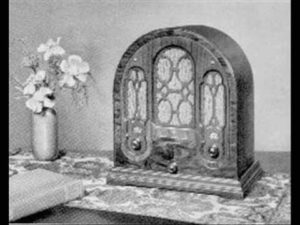 tube super- hetrodyne set with a loud speaker. Television became the thing in the 1950’s. The early sets were quite cantankerous. Horse and mule power powered agriculture until the late thirties when the row crop tractors attained a degree of efficiency. For cultivating row crops, up until the 1920’s- steam traction engines were used mostly for powering threshers, corn sheller, etc. They were too ungainly for most field work. The first gas and oil burning tractors were awkward but they were improved rapidly, lighter and faster. I had a 1924 McCormick Deering 15-30 and a three bottom plow. I plowed several thousand acres with it as there weren’t any around. With a team and one row cultivator, one could cultivate 5 or 6 acres of corn a day. With the farm all row crop and 2 row cultivator, one could cultivate 20 or more acres a day.
tube super- hetrodyne set with a loud speaker. Television became the thing in the 1950’s. The early sets were quite cantankerous. Horse and mule power powered agriculture until the late thirties when the row crop tractors attained a degree of efficiency. For cultivating row crops, up until the 1920’s- steam traction engines were used mostly for powering threshers, corn sheller, etc. They were too ungainly for most field work. The first gas and oil burning tractors were awkward but they were improved rapidly, lighter and faster. I had a 1924 McCormick Deering 15-30 and a three bottom plow. I plowed several thousand acres with it as there weren’t any around. With a team and one row cultivator, one could cultivate 5 or 6 acres of corn a day. With the farm all row crop and 2 row cultivator, one could cultivate 20 or more acres a day.
When I got to be 21 years old, I got elected to the Dist. 86 School Board and served continuous for 21 years.Then in 1946 I was elected Justice of the Peace for 1 term. That’s where the nickname “Judge” came from. My father told of the grasshopper plague of the 1880’s when they came it was like a cloud. When they left, they had eaten everything that was green and how everything had to be hauled from Plattsmouth before the railroad was built. When they got the first reaper, then they could raise more than 5 acres of grain. Before that, it was cut with a cradle. I don’t remember how long it took to cut an acre of grain with a cradle, but I bet it took more than one day. After the reaper came the binder that tied the grain into bundles with twine. The first ones gave a lot of trouble. My father made an improvement on the Knotter that hasn’t been changed today. Knotters are still used on hay balers. International Harvester paid him $25 for the idea. The corn was picked by hand and a good husker could pick 100 bushels a day and some could pick more. But I couldn’t do it. Seventy five bushels was my limit. As the corn picker was developed, a tractor mounted picker could pick 600 bushels an hour. However, they grind up the corn cobs.
Back to myself again…by and large, I had an enjoyable childhood. Even dangerous sometimes…for instance when when I was 6 1/2 years old I poured kerosene on a bed of live coals and blew up  the stove and got fried GOOD! I out grew 995 of the scars but I still have a few. My father had a box of about a dozen new door locks. I got into them and took them apart…of course..I couldn’t put them back together again. Father told mother “that kid is like a grasshopper-into everything!”
the stove and got fried GOOD! I out grew 995 of the scars but I still have a few. My father had a box of about a dozen new door locks. I got into them and took them apart…of course..I couldn’t put them back together again. Father told mother “that kid is like a grasshopper-into everything!”
I was always a curious brat, very few things escaped my attention. Like all boys, I wanted a gun, but no dice. Finally when I was old enough, father said ‘there’s the shot gun, go hunting”. I shot once, it kicked like a mule, I went back home and never took it again!
When I was 3 years old, my father bought a Model T Ford car. It was some treat to ride in an automobile. That one, like most cars of it’s time, had  acetylene gas head lamps. Two carriage style lamps mounted on the cowl burned kerosene as did the tail lamp. When winter came, autos of that era were usually jacked up, partly because to drive in the cold weather boiling water was poured into the radiator to help in starting. On arrival of where ever you were going, the water was drained until you were ready to go home. Anti Freeze didn’t come on the market until the late twenties and that was alcohol based that evaporated badly. Some tried glycerin in the radiators before but it would seep out and also turn the consistency of spaghetti. Father kept that car until 1922-an old gentleman, Noah Stafford always wanted to buy it. He finally must have mad an offer that Pop couldn’t turn down, as the man’s son-in-law came home from town with us and took the car back. By that time we had a telephone and father called the Ford dealer at Weeping Water and told him to bring a new car over. Needless to say, he was there in less than an hour. It was possibly one of the easiest sales ever made. That was a good car and an uptown job-electric lights, electric starter, demountable rims and a spare tire.
acetylene gas head lamps. Two carriage style lamps mounted on the cowl burned kerosene as did the tail lamp. When winter came, autos of that era were usually jacked up, partly because to drive in the cold weather boiling water was poured into the radiator to help in starting. On arrival of where ever you were going, the water was drained until you were ready to go home. Anti Freeze didn’t come on the market until the late twenties and that was alcohol based that evaporated badly. Some tried glycerin in the radiators before but it would seep out and also turn the consistency of spaghetti. Father kept that car until 1922-an old gentleman, Noah Stafford always wanted to buy it. He finally must have mad an offer that Pop couldn’t turn down, as the man’s son-in-law came home from town with us and took the car back. By that time we had a telephone and father called the Ford dealer at Weeping Water and told him to bring a new car over. Needless to say, he was there in less than an hour. It was possibly one of the easiest sales ever made. That was a good car and an uptown job-electric lights, electric starter, demountable rims and a spare tire.
In 1913 Father also traded his Edison Cylinder Record Phonograph on a new new Victrola. I still have it and it plays as good as ever. Seventy seven years is a long time for something like that to la
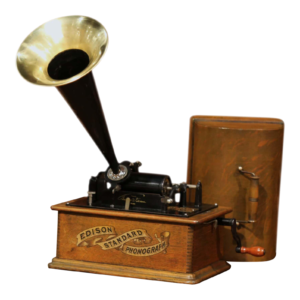
st.
We had an eight acre orchard. Mostly summer apples. Once in a while father would ship a carload, but usually there wasn’t too much a market for summer apples. Wind falls that fell in deep grass were given away and picked off the tree, 10 cents per bushel. We had a large cider mill. People would come and make cider by the jug full. One neighbor would come every summer with the whole family and make 2 barrels of cider for vinegar. As I got older, I wondered at the amount of vinegar they used. I imagine some of it ended up as Hard Cider with a kick like a mule.
When I got big enough to run a walking plow, Pop didn’t hire a man for fall plowing. I thought, O Boy, I’m a man now! Running a walking plow isn’t hard work. Just walking and having a hold on the handles. We had 60 acres or so to plow every fall. With 2, 16 inch plows! In later years I figured how 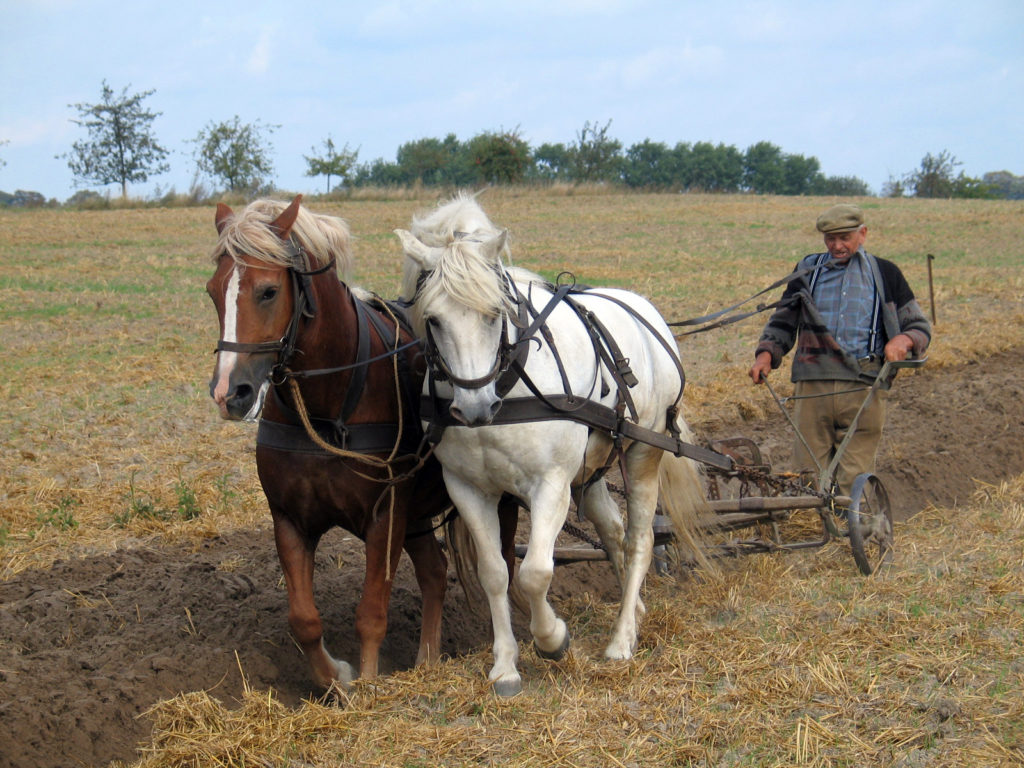 far one walks to plow 1 acres with a 16 inc plow-about 7 1/2 miles! To give the horses a rest, we would stop and put up prairie hay, fill the hay mow in the barn and make a couple of big stacks outside. Then came wheat seeding time and then corn picking. I never had to pick much corn. Everyone tried to get through by Thanksgiving. Also when I went to school, all of the big boys and some girls got at least 2 weeks off to pick corn. Wouldn’t that cause a consternation now!!
far one walks to plow 1 acres with a 16 inc plow-about 7 1/2 miles! To give the horses a rest, we would stop and put up prairie hay, fill the hay mow in the barn and make a couple of big stacks outside. Then came wheat seeding time and then corn picking. I never had to pick much corn. Everyone tried to get through by Thanksgiving. Also when I went to school, all of the big boys and some girls got at least 2 weeks off to pick corn. Wouldn’t that cause a consternation now!!
At Thanksgiving time a program of music, song and mabe a stage play ws put on at the school house. In those days the school house was more or less the center of social activity for the neighborhood. Sometimes we had a box supper at the school house. Ladies and girls would fix up a pretty box with lunch for two and they were auctioned off. Some of the fellow would pay a good price to get to eat with his girl. Then there were house parties once in a while, or maybe a dance. I played for dances but never learned to dance. Life was simpler then and entertainment was a lot cheaper too.
The late teens and early twenties was and era of good times. Sporty roadsters with rumble seats, girls bobbed their hair, put on lots of make up and work short skirts – it was called the Flapper Era. The general conduct was called scandalous by the more prim members of society – but everyone seemed to survive and most turned out as pretty good people.

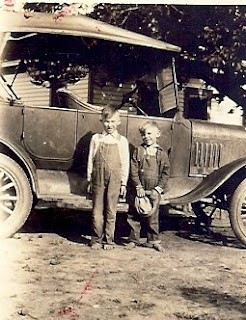







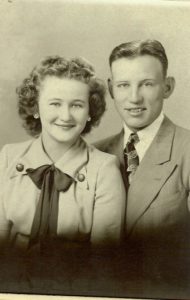
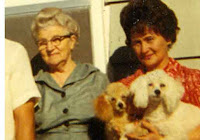



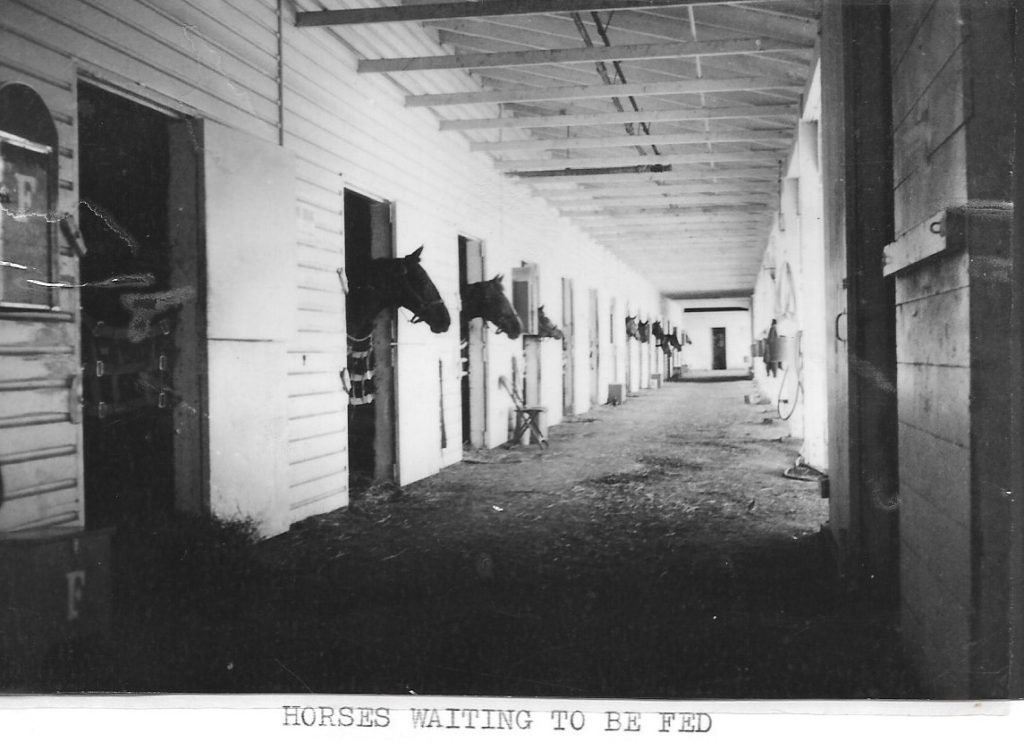












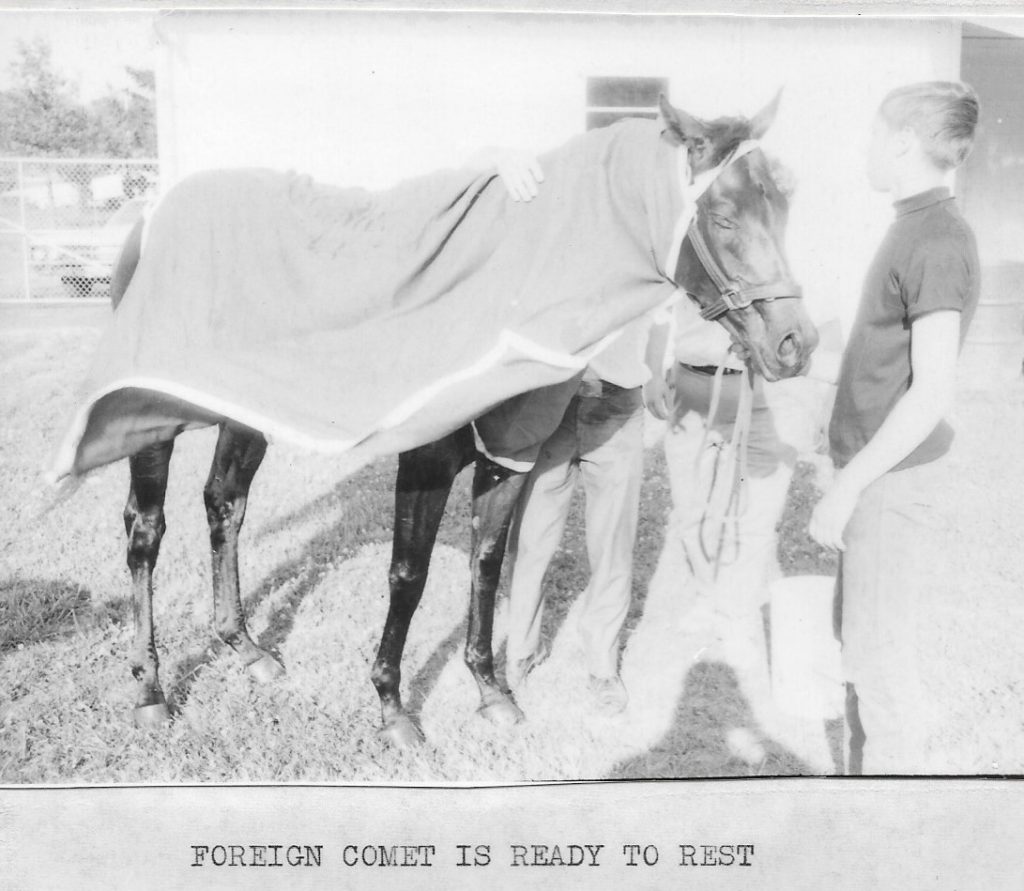
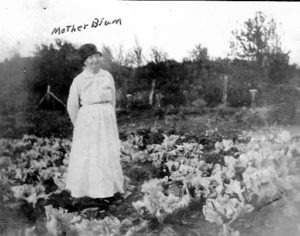 I remember the day Mother was raking hay and the horses run away and she came with hair hanging down clothes all ragged. She had been drug behind the rake sometime before she got loose, was bare foot, lost her shoes. Was all back and blue and how scared we were and cried.
I remember the day Mother was raking hay and the horses run away and she came with hair hanging down clothes all ragged. She had been drug behind the rake sometime before she got loose, was bare foot, lost her shoes. Was all back and blue and how scared we were and cried.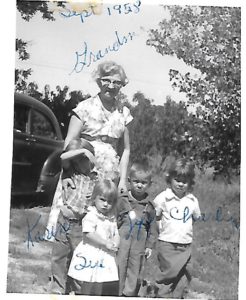 Ich bin klein (I am small or little)
Ich bin klein (I am small or little) The first thing that comes to my mind when I think of Grandma, is the time we went to visit her in Omaha where she lived with her brother Martin. I recall that she had baked sticky pecan rolls that she had just taken from the oven in anticipation of our visit.
The first thing that comes to my mind when I think of Grandma, is the time we went to visit her in Omaha where she lived with her brother Martin. I recall that she had baked sticky pecan rolls that she had just taken from the oven in anticipation of our visit.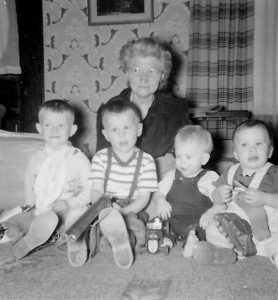
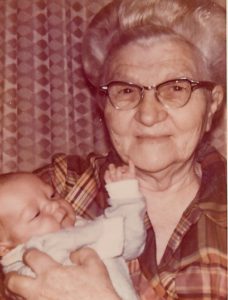
 Dear Susan,
Dear Susan,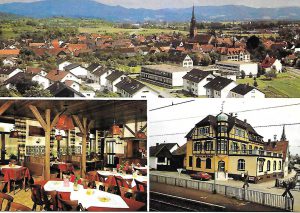
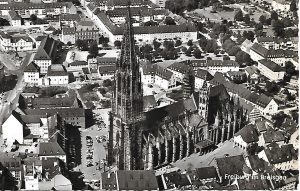 While there, in Germany, Martin visited the parsonage next to the Rebstock. There all records were complete. The parson had adequate forewarning and Martin had made clear that he wanted to know what happened to his grandfather George “Carl ” Moesinger. He had met with the preacher early in his visit and found him fully prepared. This is the day Martin learned that his grandfather was buried July 8, 1866.
While there, in Germany, Martin visited the parsonage next to the Rebstock. There all records were complete. The parson had adequate forewarning and Martin had made clear that he wanted to know what happened to his grandfather George “Carl ” Moesinger. He had met with the preacher early in his visit and found him fully prepared. This is the day Martin learned that his grandfather was buried July 8, 1866.